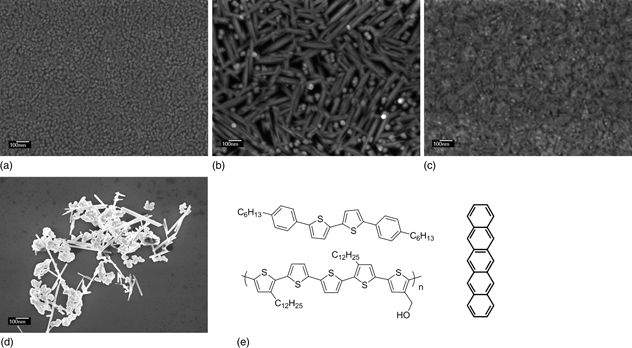Article contents
Synergistic thermoelectric power factor increase in films incorporating tellurium and thiophene-based semiconductors
Published online by Cambridge University Press: 03 April 2013
Abstract

Two thiophene-based semiconductors, a vapor-deposited small molecule and an amorphous polymer, as well as pentacene for comparison, show potential in enhancing the thermoelectric properties of tellurium (Te) nanowires. For vapor-deposited films, Te nanostructures form directly on glass substrates or organic semiconductor films. The resulting Te power factor (S2σ) was enhanced from 36 to 45 W/mK2 (56 for pentacene) because the bilayer provides an enhancement in Seebeck (S) without compromising conductivity (σ). For solution deposited polymer blends, we obtained power factors from a Te nanowire network that alone would not have sufficient connectivity (up to 0.1 µW/mK2). While the organics are unoptimized, they are prototypical materials for further development.
- Type
- Research Letters
- Information
- Copyright
- Copyright © Materials Research Society 2013
References
- 4
- Cited by




